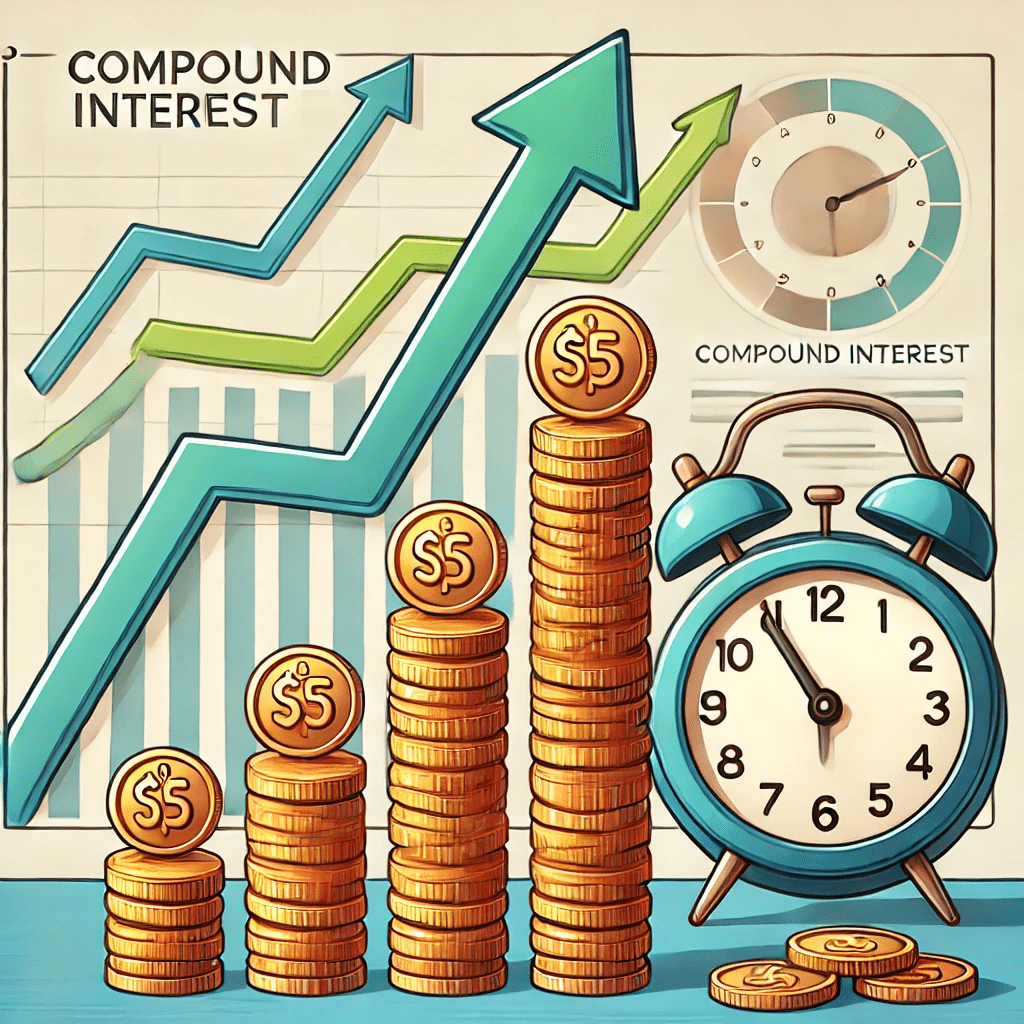Compound Interest in Trading: Scaling with Risk Management
Table of Contents
Toggle
Compound interest is often referred to as the “eighth wonder of the world,” and in the world of trading, it can be a game-changer. By reinvesting profits and maintaining disciplined risk management, traders can grow their portfolios exponentially over time. This post explores how compound interest works in trading, the role of risk management, and strategies to maximize your gains.
What Is Compound Interest in Trading?
Compound interest in trading refers to the process of reinvesting your profits to generate additional earnings. Unlike simple interest, where only your initial capital earns returns, compound interest allows your returns to earn returns, creating a snowball effect over time.
For traders, this means that as your portfolio grows, the profits from successful trades can be reinvested, allowing your capital to compound and increase exponentially.
In this video I published I explain WHAT it is, WHY it is important, and WHO should utilize it’s power.
How Compound Interest Works in Trading
1. Starting with a Small Account
Even with a modest initial capital, compound interest can lead to significant portfolio growth if you’re consistent and disciplined.
2. Reinvesting Profits
After each profitable trade, the gains are added back to your trading balance. This larger balance allows for slightly bigger trades, assuming your risk remains a consistent percentage of your account.
3. Consistent Risk Management
The key to leveraging compound interest in trading is to maintain consistent risk parameters. For example:
- Risking 1–2% of your account per trade ensures that losses are manageable while allowing gains to compound.
The Math of Compounding in Trading
Let’s say you start with $1,000 and aim for a monthly return of 5%. Using compound interest, your portfolio could look like this over time:
| Month | Starting Balance | 5% Gain | Ending Balance |
|---|---|---|---|
| 1 | $1,000 | $50 | $1,050 |
| 2 | $1,050 | $52.50 | $1,102.50 |
| 3 | $1,102.50 | $55.13 | $1,157.63 |
| 12 | $1,795.86 | $89.79 | $1,885.65 |
Over a year, your initial $1,000 grows to $1,885.65—not by doubling your returns but by letting your profits build on themselves.
The Role of Risk Management in Compounding
Why Risk Management Is Crucial
Compounding works both ways. Just as profits can grow exponentially, losses can quickly deplete your account if you take on excessive risk.
Best Practices for Risk Management:
- Set a Fixed Risk Percentage:
Risk no more than 1–2% of your total account on any single trade. - Use Stop-Loss Orders:
Protect your capital by limiting potential losses. - Avoid Overtrading:
Stick to your plan and avoid taking unnecessary trades.
Compounding vs. Over-Leveraging
Many traders confuse compounding with over-leveraging. The difference lies in how you manage risk:
- Compounding: Gradually increasing position sizes as your account grows.
- Over-Leveraging: Taking excessively large positions in the hope of quick gains, often leading to devastating losses.
Strategies to Maximize Compounding in Trading
1. Stick to a Consistent Plan
Create a trading strategy that includes entry and exit rules, position sizing, and risk management. Consistency is key to compounding.
2. Focus on Small, Steady Gains
Avoid chasing big wins. Smaller, consistent gains compound more effectively over time.
3. Keep Emotions in Check
Emotional decisions often lead to overtrading or abandoning your plan, disrupting the compounding process.
Real-Life Example of Compounding in Trading
Let’s say a forex trader starts with $2,000 and achieves an average monthly return of 8%. Over two years, their account could grow as follows:
| Year | Starting Balance | Annual Return | Ending Balance |
|---|---|---|---|
| 1 | $2,000 | $2,074.40 | $4,074.40 |
| 2 | $4,074.40 | $3,259.20 | $7,333.60 |
By year two, their account has grown to $7,333.60—nearly quadrupling through compounding.
FAQs About Compounding in Trading
1. Can I Compound My Losses?
Technically, yes. If you don’t manage risk, losses can snowball just as profits do. This is why disciplined risk management is essential.
2. How Long Does It Take to See Results?
Compounding is a long-term strategy. While you may see incremental growth initially, the exponential benefits become apparent over time.
3. Is Compounding Suitable for Beginners?
Absolutely. Starting small with disciplined risk management is the best way for beginners to experience the benefits of compounding.
Conclusion
Compound interest in trading is a powerful tool for scaling your portfolio. By reinvesting profits, maintaining consistent risk management, and staying disciplined, you can achieve exponential growth over time. Remember, the key to successful compounding is patience—it’s a marathon, not a sprint.
Ready to start compounding your trading profits? Focus on small, consistent gains and let the power of compounding work its magic on your portfolio.
Private Coaching
If you’re ready to take your trading skills to the next level and compound your portfolio, book your free discovery session with me today! We’ll discuss your goals, create or assess your current trading system, and develop a personalized plan for you to become a consistent and successful trader.
